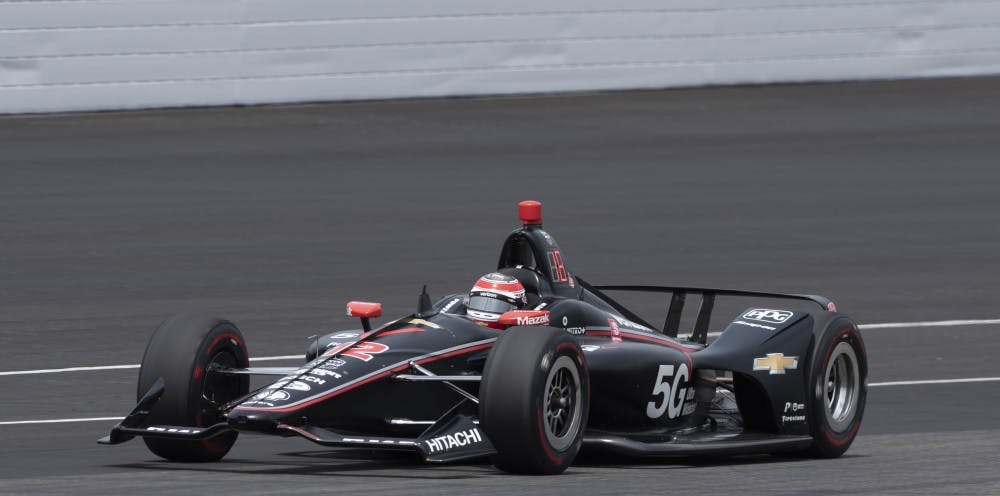INDIANAPOLIS — It’s been eight years since then-Seattle Seahawks receiver Golden Tate shared his thoughts on how NASCAR drivers aren’t athletes, but the debate remains prevalent today, even bleeding over into IndyCar.
“I think the people that make those comments — they’ve never been in it. They don’t know what it’s like,” said Graham Rahal, IndyCar driver with Rahal Letterman Lanigan Racing. “We pour a lot into this, put a lot of time and effort into our physical well being.”
According to indycar.com, many drivers participate in different strength and endurance activities, such as triathlons and cycling, to stay in shape and gain a competitive edge. IndyCar drivers Sage Karam and Josef Newgarden proved they could be just as athletic as professional football players at the 2015 NFL combine, posting results “comparable” to projected top-10 picks in the same agility drills.
“It’s like any sport,” said 2018 Indy 500 Champion Will Power. “At the end of the day, you’ve got to execute in every way. No mistakes on the track like you would have no mistakes on the football field or the basketball court. The amount of detail that goes into winning a race — there’s so much homework done.”
While preparation for an IndyCar race can be grueling, it’s only getting drivers ready for what they can expect come race day. Indycar.com states drivers reach up to five times their body weight against their bodies during a race, and heart rates reach 85 to 95 percent capacity.
Power and Rahal agreed their body gets extremely sore after a race, and it takes at least a couple days for their body to fully recover.
“Honestly, it’s like after you’ve run a marathon or a triathlon,” Power said. “You’re very dehydrated, you’re physically tired, you’re mentally tired and it takes a toll. Usually, if you race on Sunday, it takes you until Wednesday to feel normal again.”
The Friday before Indy 500 qualifying, also known as “Fast Friday,” drivers receive extra horsepower and reach top speeds north of 230 mph.
Fans of IndyCar stand behind the drivers in the “Are drivers athletes?” debate.
“I’ve never been in an Indy car,” Sean McNulty said. “But going 230 mph on the track, you have to have pretty good stamina and pretty good strength I would think to control a vehicle going that fast.”
Ryan Beery doesn’t consider himself much of an IndyCar fan, but even he knows what the drivers go through is no easy task.
“I couldn’t go 230 mph,” Beery said. “I freak out when I go 80.”
The toll of consistently driving an Indy car can start to affect drivers’ health before athletes in the major professional sports leagues (MLB, NBA, NFL, NHL).
Graham Rahal made his IndyCar debut at the age of 18 in 2007. Now 30, he said he consistently has issues with his lower back, right leg and sciatic nerve. He added that his father, co-owner of Rahal Letterman Lanigan Racing and 1986 Indy 500 Champion Bobby Rahal, has struggled with back problems for years.
“It’s pretty bad. I’m 30, and my body hurts,” Graham Rahal said. “It’s a big deal. It definitely beats you up, more than probably most other sports. In our sport, you’re going to take some hits. You hope you don’t hit your head as much as maybe a football player does. Aside from that, your body is definitely taking a beating.”
Tate may be bigger, faster and stronger than most competitive drivers, but he might have a change of heart if he took a ride along during an IndyCar practice.
Contact Zach Piatt with any comments at zapiatt@bsu.edu or on Twitter @zachpiatt13.





